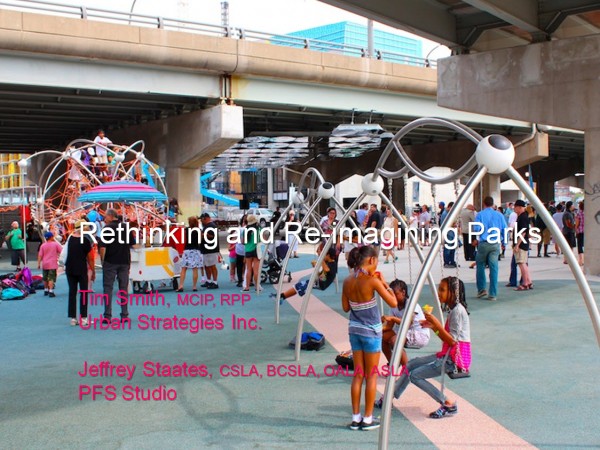Jeffrey Staates of PFS Studio and Tim Smith of Urban Strategies presented a learning session at the 2013 CIP/ PIBC Conference in Vancouver this past weekend: Rethinking and Re-Imagining our Parks. The discussion focused on a diverse set of contemporary neighbourhood parks within several new development plans in Toronto and the Golden Horseshoe area. From a survey of park space per land area and per capita, the question posed was: how much park space is enough, and what should a neighbourhood park be?
No longer the simplistic green patches for passive recreation provided through development formulas of the sixties, the contemporary neighbourhood park is evolving to accommodate innovative solutions for community amenities such as places for active programming, the incorporation of local food production, and environmental infrastructure. In parallel with greater complexity of park design, local communities are increasingly aware of the opportunities for amenities within their parks, while municipalities are facilitating greater consultation and input into the creation of these parks.
Strategies discussed for enhancing neighbourhood park spaces included integrated open space networks and innovative streetscape design. Case studies from Toronto were used to illustrate new attitudes and interdisciplinary approaches to finding new opportunities for community park spaces. These precedents included Sherbourne Common, which uses public art and stormwater infrastructure in a fully integrated park design; a linear park embedded within the terminus of Front Street in the West Don Lands; and Underpass Park , an unexpected neighbourhood connection with year round animation under a highway overpass.

